This journal entry will cover topics like loosening garden bed soil, adding compost and fertilizer, mulching with cardboard, and addressing spring weeds. What I did this week was some combination of the following:
- Turn over the garden beds to disturb and mix in the spring weeds and begin to loosen the earth
- Add soil amendments (fertilizers)
- Level things a bit and lay down partially-rotted corrugated cardboard
- Add an inch or two of compost on top
- Wait for spring rains to do their job
Our garden is not a big, tilled shape, but rather a series of garden beds. Most are rectangular, about 8 feet by 4 feet. Other of our beds are round. Some are raised with cedar or plastic borders. Others are just dug in the ground and surrounded by grass or mulch. With the warmer weather of March comes the hard work of preparing each of these garden beds for planting.
Some of these garden beds we’ll plant in spring with cold-hardy crops like greens, carrots, onions, and fava beans. Others will sit until after our last frost (around May 1). Then, I’ll be transplanting tomatoes and peppers, and putting squash, bean, corn, and many other seeds right into the ground.
Cleaning Up Overwintered Crops
If you’ve grown anything over the winter, like we can here in western North Carolina, a first step in spring is to clean up what’s left. Many advisors will tell you to remove old plants from the garden and even burn them to achieve good pest and disease management. I don’t much do this, except with old tomato vines. I’m more likely to leave old plants in place, or pile them as a kind of spring mulch.
I guess I have the feeling, with plants that grow big stalks, vines, and leaves that we don’t eat, that what they took from the soil to grow can now be given back. In the top image of this post, you can see ten month old collard green plants. I’m digging them up by the roots with a little hand mattock, then letting them rot in place.
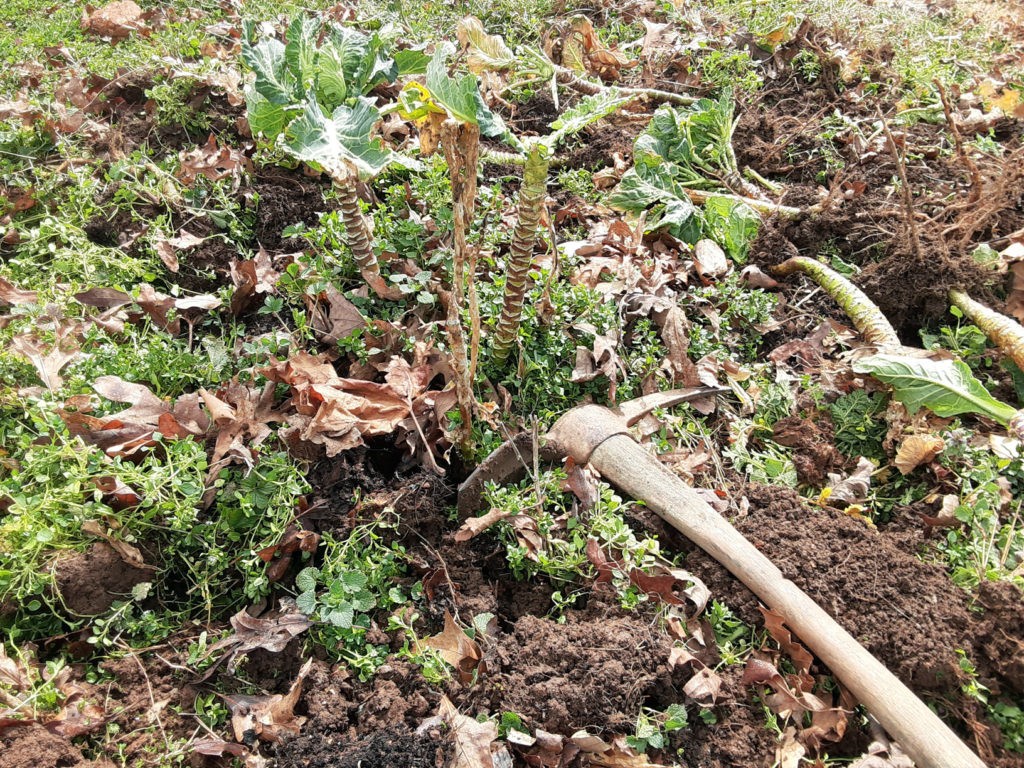
Adding Fertilizer to Garden Beds
I have a nice supply of various soil amendments in my outdoor closet. They are organic-approved fertilizers, and many of them break down slowly compared to the more powerful synthesized nutrient sources. So, I add some to most beds most years, knowing that I’m seeing the results this year of what I added over time.
I tend to mix it all together very unscientifically in a bucket. I’ll buy a 50 pound bag of something and add it here and there for a few years until it’s gone. Spring is a great time to do this because the heavy rains and active flora and fauna will continue to move everything around in the garden beds.
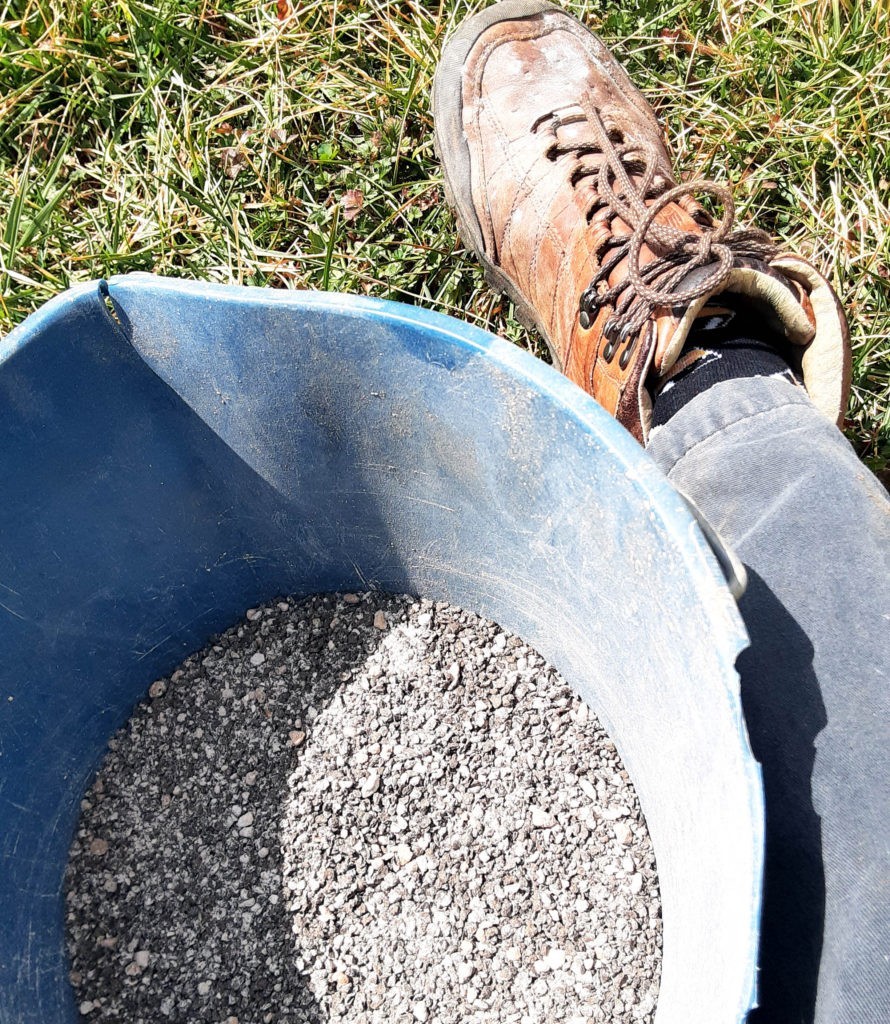
My primary added amendment is Harmony 5-4-3, a general fertilizer produced from an organic chicken layer farm in New York. This year, my bucket also includes:
- Azomite
- Calphos
- Greensand
- Something else I can’t remember
I throw handfuls of this magic mixture on top of the weedy garden bed before I do anything else, figuring it’ll get mixed in during all the other steps to come.
Dealing with Spring Weeds
By March, leafy green life has returned to the soil here, in the form of chickweed, winter cress, deadnettle, henbit, and onion grass. Do you own research, but if you’re hungry and like to try something new, all of these are edible! These weeds are pretty mild nuisances. Once spring is over, they just go away. I don’t mind letting my chickweed go to seed. The blanket of chickweed I get next spring can be dug in and left to compost, like nature’s own green manure cover crop.
That’s just what I’m doing in these photos: using a digging fork or a mattock to turn over big chunks of soil, small spring weeds still attached. You can’t see it, but the fertilizers are there too, turning under. I don’t break the big chunks up into a smooth planting surface at this point. I just knock it all down enough to lay the cardboard fairly level on top. The soil holds a lot of life that is just waking up and, left to its own devices, will grow beneficial fungi and be loosened by worms and others.
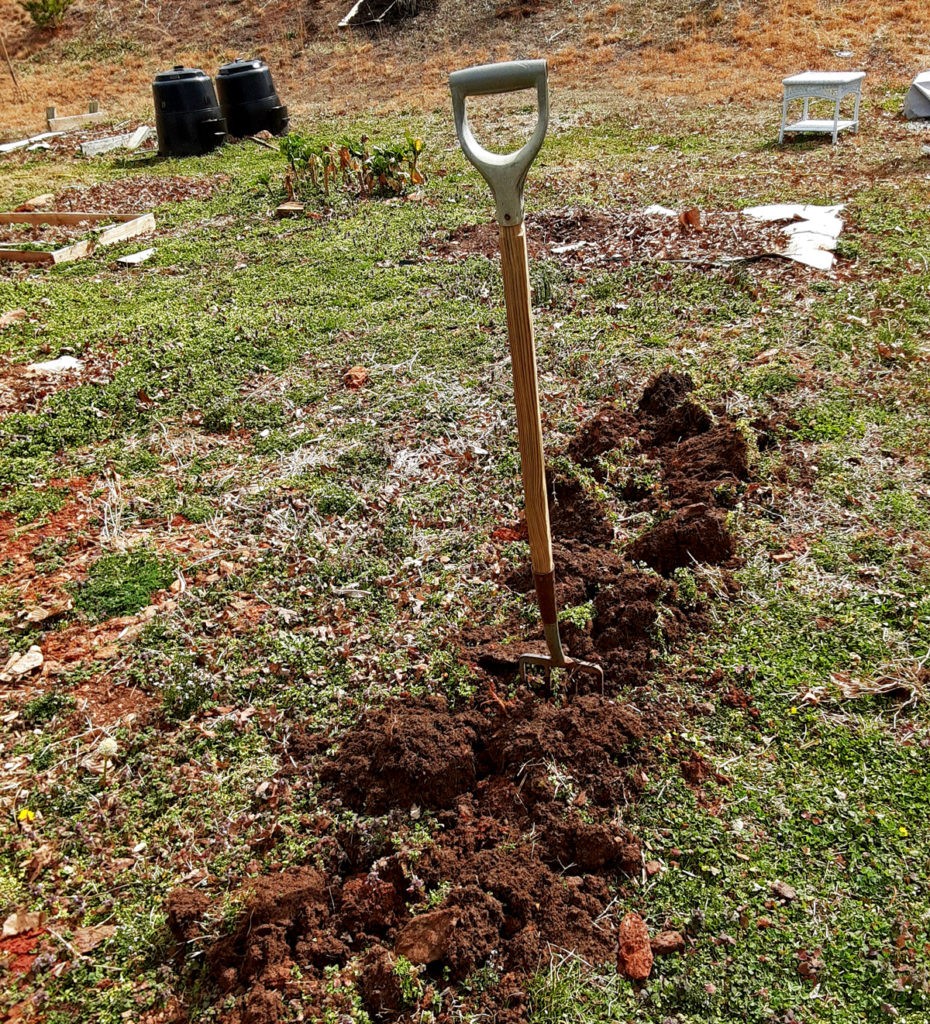
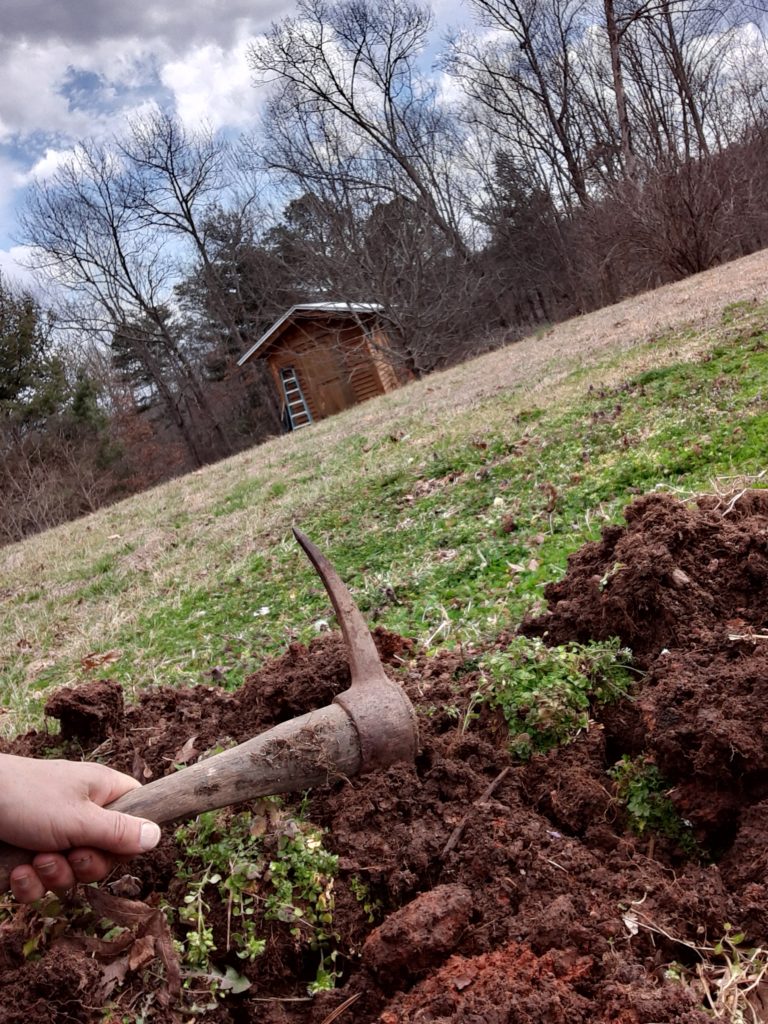
Adding Cardboard to Garden Beds
The pandemic has gifted most of us with a lot more corrugated cardboard than we usually have. You can mulch garden beds with cardboard, and after listening to a podcast on the topic of cardboard mulch this winter, I did a lot of that this year. Some people don’t like the effect of cardboard on soil structure. I address this by letting my cardboard get nice and rained on and half-rotten all fall and winter. When I put it in the garden, it’s not keeping the rain from going through. Nature’s decomposition machine will go to work on it quickly. I put the newer pieces of cardboard in the beds where I’m going to grow big plants that need a lot of space. I’ll cut a hole where each plant goes.

Adding Compost to Garden Beds
My final early spring step this year was to put a layer of compost on top of the cardboard. The wood fines in the compost made me a little nervous, so I’m letting it get a month of sun and rain before I mix everything together.

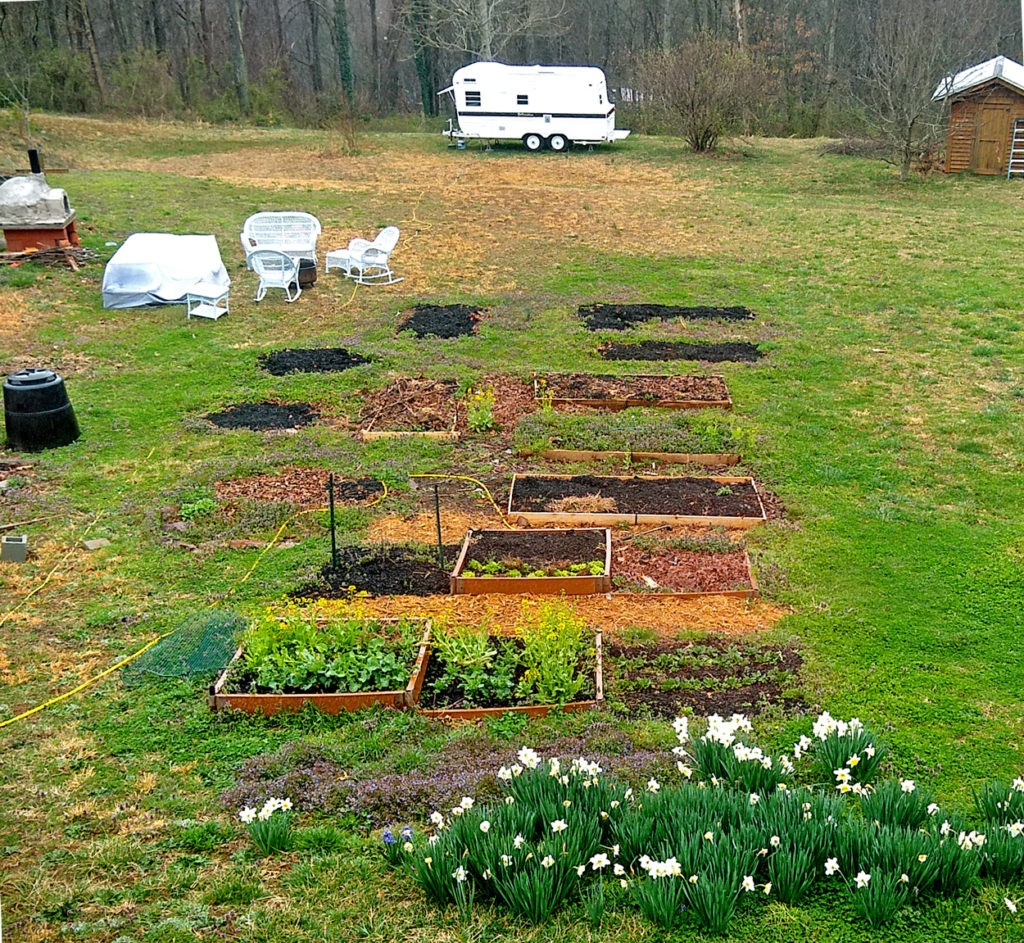
This year, but not every year, I got a pile of commercially-made compost delivered to my home in a big truck. My compost comes from Danny’s Dumpster, a waste-upcycling business here in Asheville. It’s pretty expensive. But I like the idea that the restaurants and breweries and food entrepreneurs who feed and booze me also give the waste that goes into my garden.
This year’s pile has a lot of woody matter in it compared with last time. I hope that’s okay. I’ve heard that decay of wood can rob soil of nitrogen. But the compost pile is not hot at all, not even warm, so I think these wood fines are already nicely broken down. The decay process already happened at the facility. I do know that Danny’s compost is tested regularly to meet strict standards
